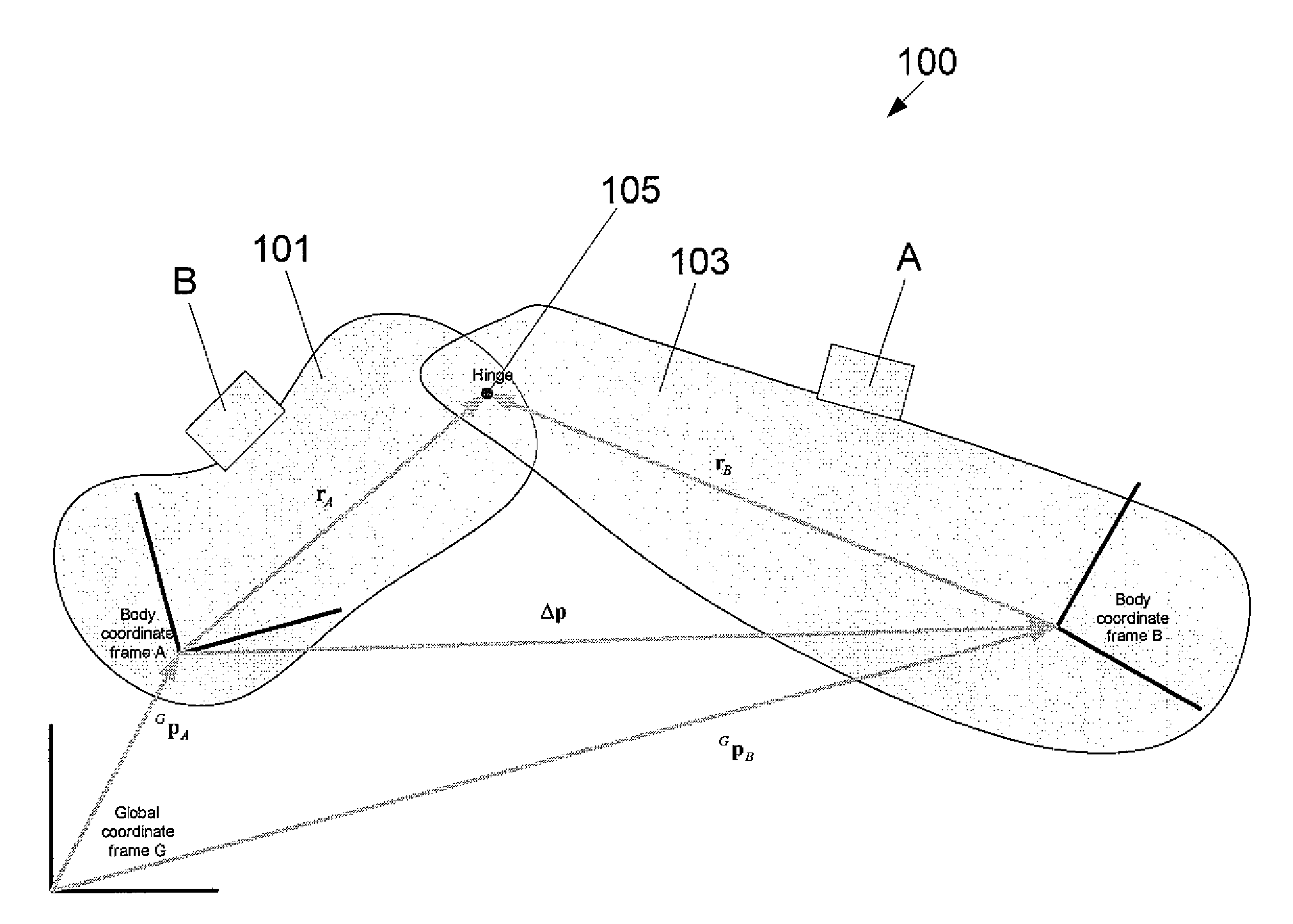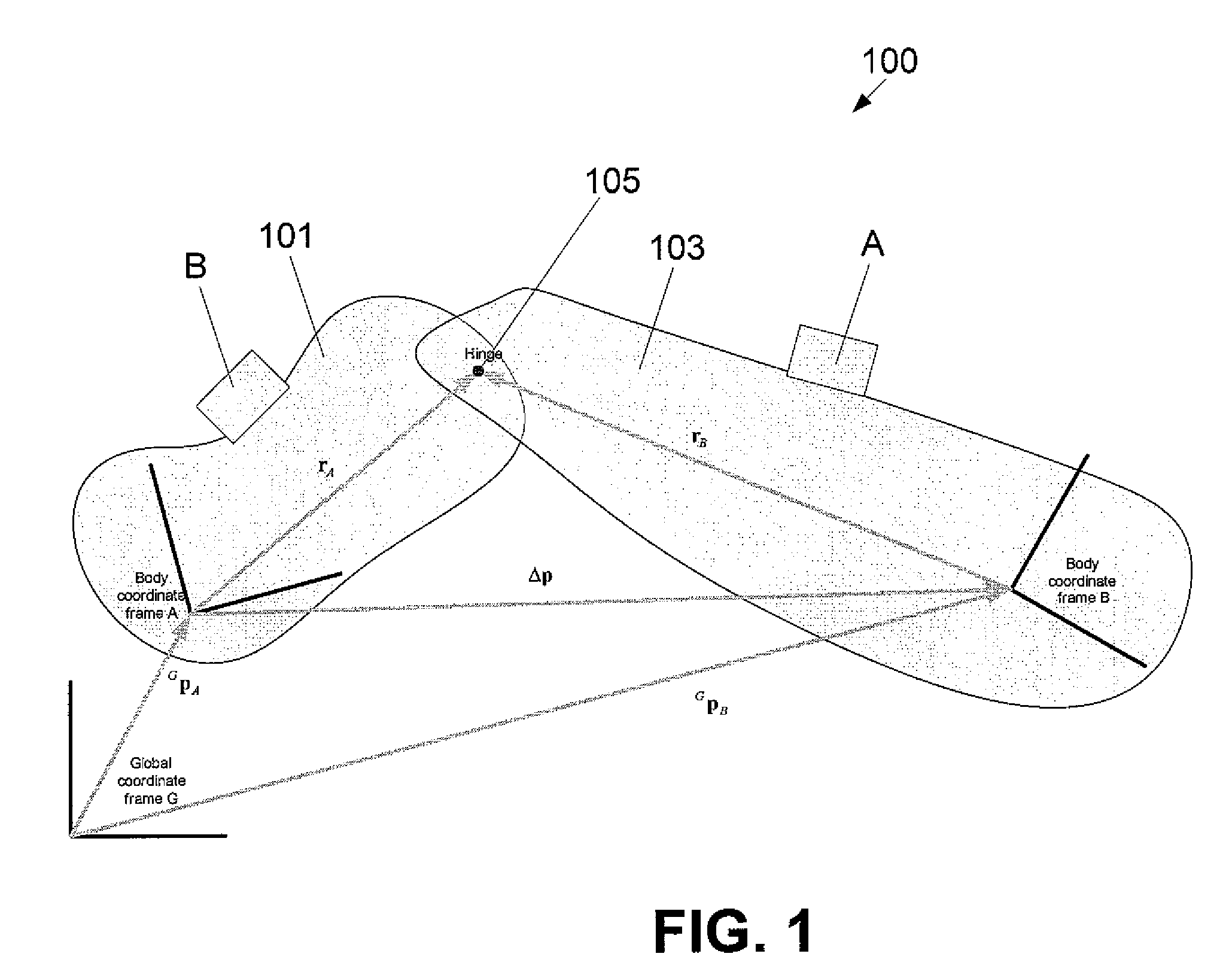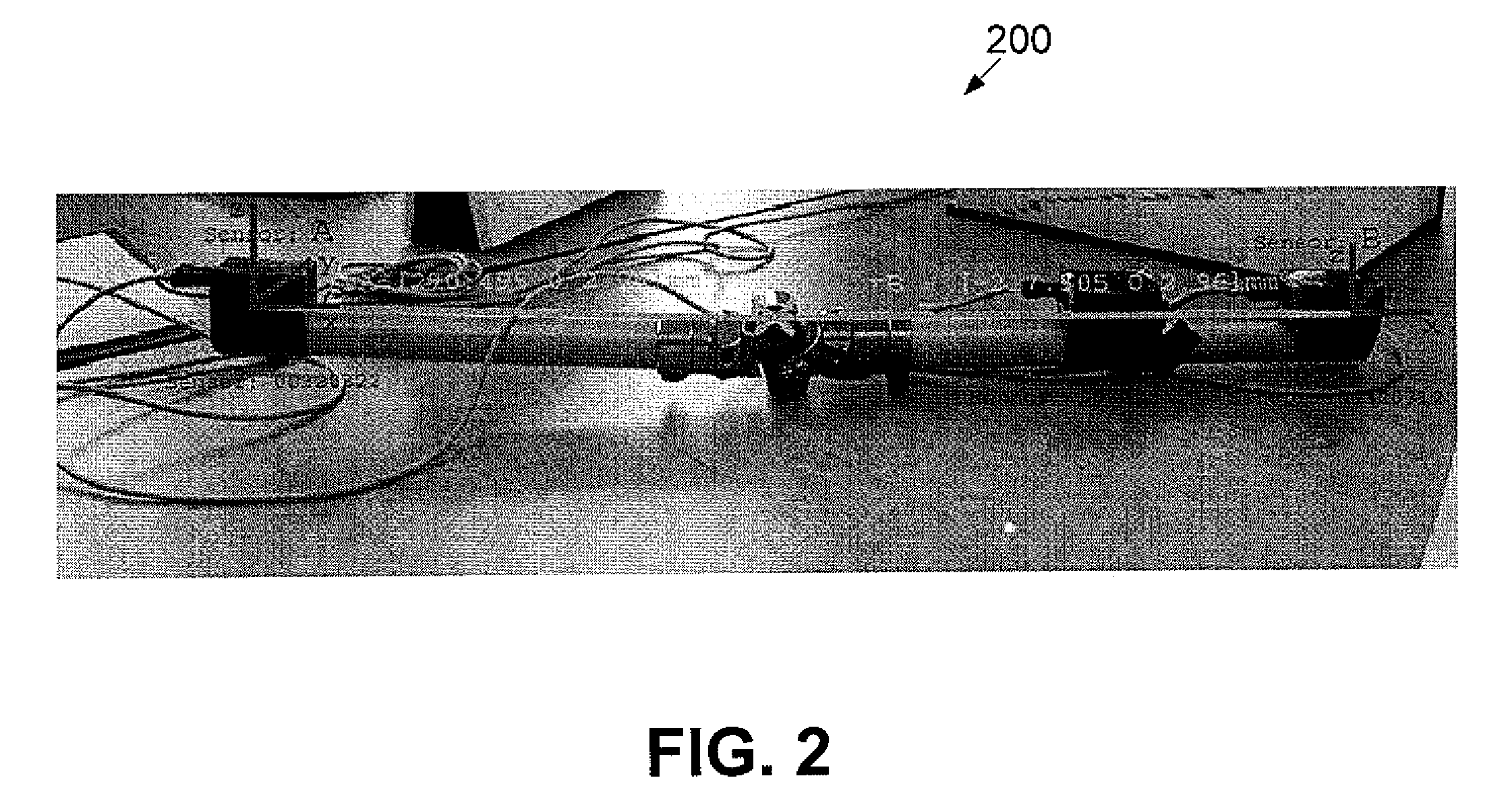Inertial Sensor Kinematic Coupling
a technology of kinematic coupling and sensor, applied in the field of motion tracking system, can solve the problems of occlusion of camera system, inability to track the motion of an object in volume, and inability to accurately estimate the distance between joints linking the object parts, etc.
- Summary
- Abstract
- Description
- Claims
- Application Information
AI Technical Summary
Benefits of technology
Problems solved by technology
Method used
Image
Examples
Embodiment Construction
[0025]The kinematic coupling (KiC) algorithm calculates (relative) orientation of two segments on each side of a joint. An inertial measurement unit aka IMU (3D accelerometer, 3D gyroscope, optionally equipped with a 3D magnetometer) is rigidly attached to each body segment. Only limited a-priori knowledge about the joint connection is needed to accurately determine the joint angle. This relative orientation between the two segments is essentially determined without using the local magnetic field as a reference for heading but using information derived from the joint acceleration.
[0026]The following initial assumptions are made:[0027]rA en rB, the joint expressed in the sensor frame A and B, respectively, are fixed.[0028]The Global frame is defined by X pointing to the north, Y pointing to the west and Z pointing up.[0029]The acceleration and angular velocity of segment A and segment B are measured by the sensors attached to these segments.[0030]The initial sensor orientations are c...
PUM
 Login to View More
Login to View More Abstract
Description
Claims
Application Information
 Login to View More
Login to View More - R&D
- Intellectual Property
- Life Sciences
- Materials
- Tech Scout
- Unparalleled Data Quality
- Higher Quality Content
- 60% Fewer Hallucinations
Browse by: Latest US Patents, China's latest patents, Technical Efficacy Thesaurus, Application Domain, Technology Topic, Popular Technical Reports.
© 2025 PatSnap. All rights reserved.Legal|Privacy policy|Modern Slavery Act Transparency Statement|Sitemap|About US| Contact US: help@patsnap.com



